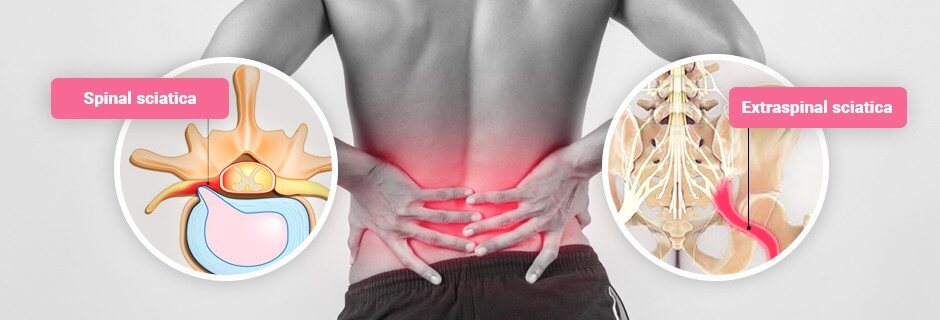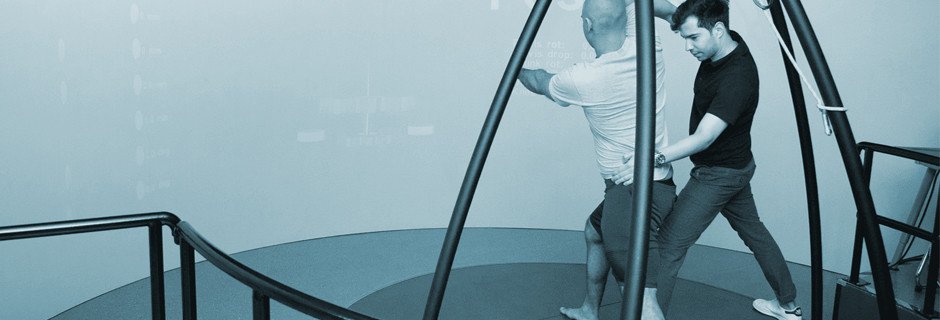Sciatica is a common problem for many people, and presents itself as varying levels of pain that radiate along the route of the sciatic nerve. Pain typically originates around the lower back, through the hip and buttocks, and down the leg. Generally, the pain is isolated to one side of the body. Many cases of sciatica are mild, and with treatment from an efficient rehabilitation center, they can be resolved in a few weeks. However, long-lasting sciatica pain may require the need for chronic sciatica treatment or pinched nerve treatment, depending on the cause and severity of the issue.
There are two types of sciatica, spinal and extraspinal. Spinal sciatica is a pain referred to the leg caused by spinal nerve root compression. Extraspinal sciatica is caused by compression of the sciatic nerve within or below the sub gluteal space.
Spinal sciatica is typically caused by a herniated disc or arthritic spinal facet joints. Extraspinal sciatica is caused by different types of hip muscle hypertrophy, bone spurs, variations in nerve gliding, fascial tightness, fibrous bands or abnormal movement around the hip and thigh.
At NY Dynamic Neuromuscular Rehabilitation, we understand how sciatica pain, especially chronic sciatica pain, can affect our patients’ overall quality of life. It can also develop into more serious problems if not addressed through proper chronic sciatica treatment. Chronic sciatica not only causes permanent nerve damage, but may also result in reduced strength in the affected leg, numbness or loss of feeling, and in more serious cases can even contribute to bladder or bowel control issues.
A variety of problems contribute to the development of sciatica, and understanding the cause of sciatica pain is essential for providing the right treatment, such as pinched nerve treatment or piriformis syndrome therapy. The causes can be broken down into three main types: sciatica from spinal pathology (diseases that affect the spine), sciatica from external factors like irritation or compression, and sciatic-like conditions that, while not directly affecting the sciatic nerve, produce similar symptoms.
Sciatica caused by spinal pathology typically revolves around herniated or bulging discs and pinched nerves. A herniated or bulging disc often places pressure on a nerve, pinching it and causing pain. The pain originates from the nerve root, causing radicular pain, or radiating to the lower extremities along the path of the nerve root. Pinched nerve treatment is necessary to reduce pressure and relieve the pain. Other pathologies include ligamentum flavum hypertrophy (inflammation or thickening of the ligaments supporting the spine) and spondylolisthesis (slipped vertebra).
There are several external factors that can contribute to sciatica, but one of the most common is piriformis syndrome. The piriformis is a flat muscle located near the hip joint in the gluteal region. Piriformis syndrome develops when this muscle places pressure on the sciatic nerve, which we can address through piriformis syndrome therapy. Other external spinal factors include obturator syndrome and ischial tunnel syndrome.
Sciatic-like conditions vary, from sacroiliac joint dysfunction and side effects from hernias, to more uncommon causes like infections or tumors. With so many potential causes of sciatic pain, it has never been more important to work with highly experienced physical therapy and chiropractic professionals to get an accurate diagnosis for sciatic nerve physical therapy.






























































